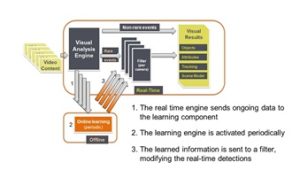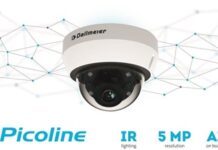
At the recent ISC West show in Las Vegas, Viisights launched its Viisights IQ, an innovative new auto-learning technology that enhances the company’s powerful behaviour recognition video analytics to reduce false alarms, increase event precision capabilities, and improve overall operational efficiency.
“Viisights behavioural recognition video analytics are deployed around the world, helping improve security and safety through the real-time precision and analysis of events. Our new Viisights IQ technology will make our entire portfolio of Viisights Wise solutions even more effective,” said Asaf Birenzvieg, CEO, Viisights. “Viisights IQ automatically creates a customised machine learning model for each camera to increase precision capabilities and dramatically lower the false positive rate. This approach overcomes one of the biggest challenges of scaling real-time video analytics by eliminating false alarms and improving the effectiveness of camera systems of any size.”
Viisights IQ enhances the system operation by adding a powerful new auto-learning function that implements autonomous training to learn what is, and what is not, an event of interest within a scene. This training is not a setting that affects every part of the system in the same way – instead, Viisights IQ analyses the video for each individual camera in the system and adjusts the learning to take the specifics of that camera view into account. For example, every camera view has many environmental and behavioural characteristics: point of view, type of objects, number of objects, the speed that objects move, how objects move, lighting conditions, and more.
Using a generic machine learning model to reflect all these variables will not provide high performance and achieve low false positive rates, because the factors vary between cameras in the same system. Viisights IQ was created to solve that problem by making periodic adjustments based on the unique situation of each camera, thereby improving precision performance for every camera and significantly reducing the number of false alarms. By improving the precision capabilities of each camera, and reducing false alarms, overall operational efficiency will also be improved, and operators can focus on the urgent events that need their attention.











